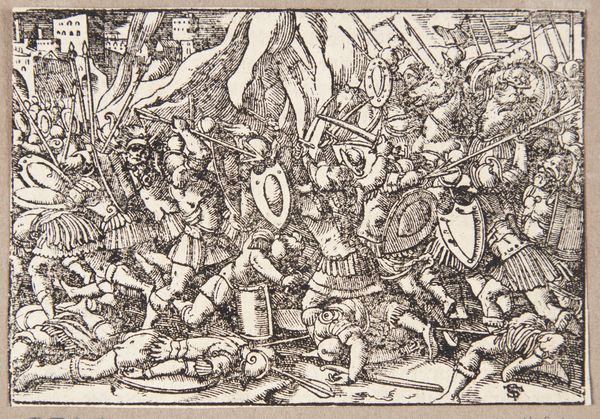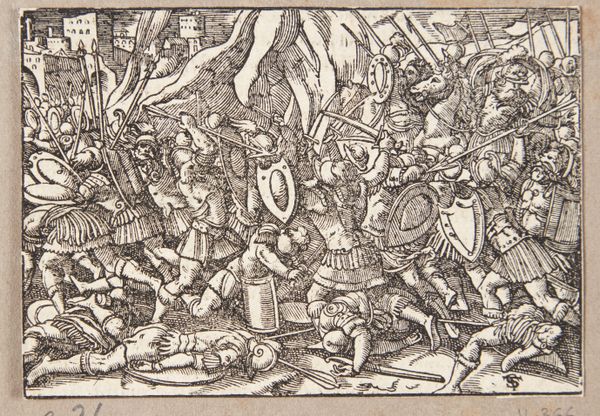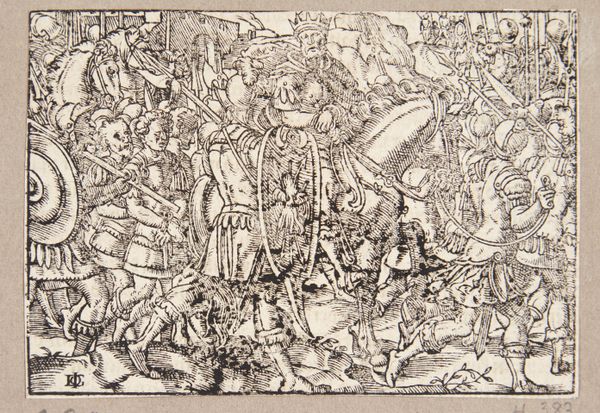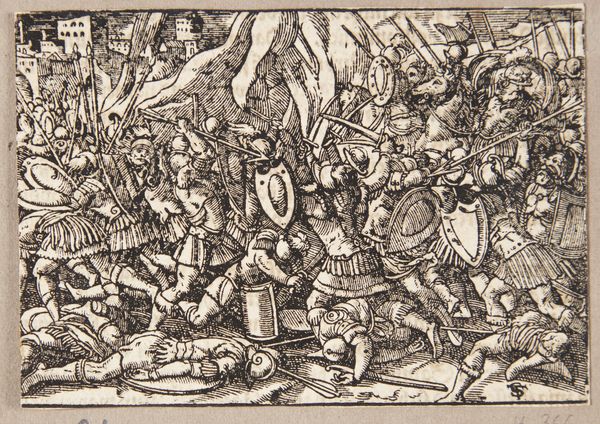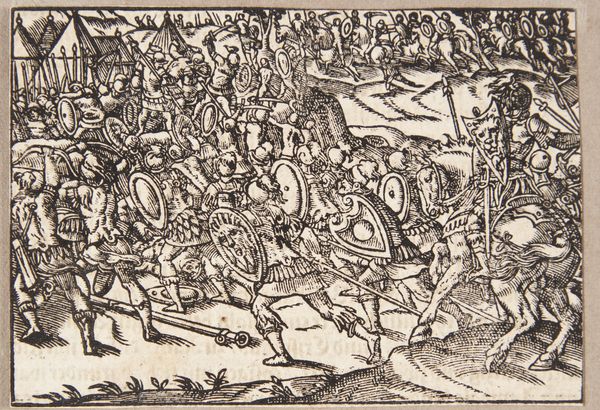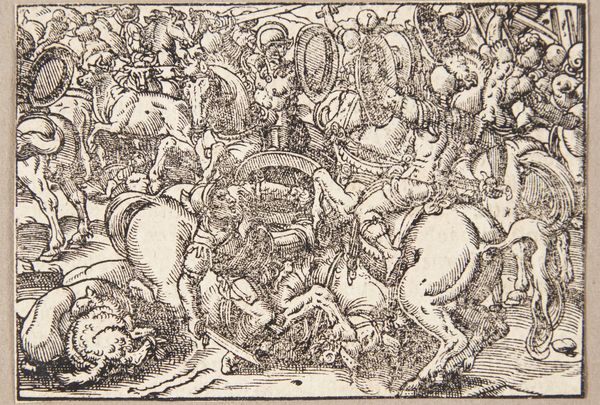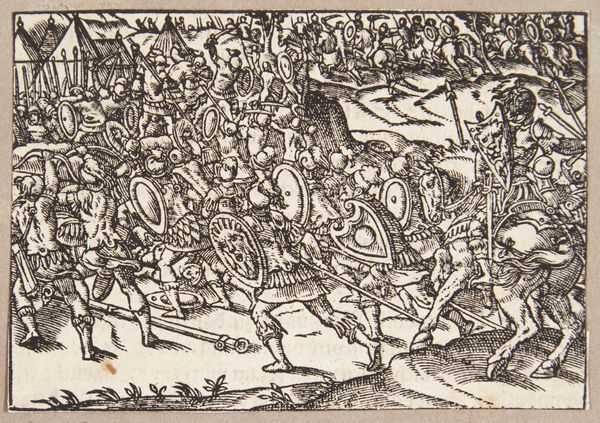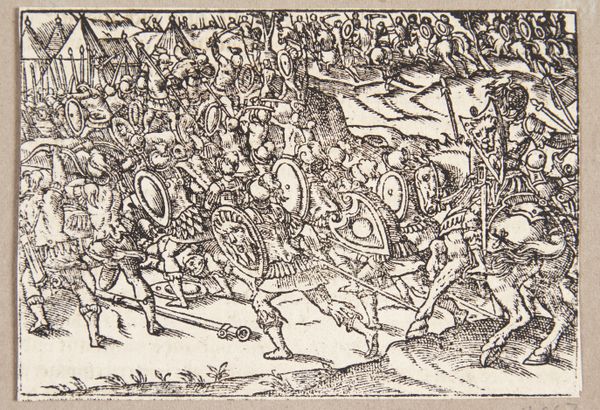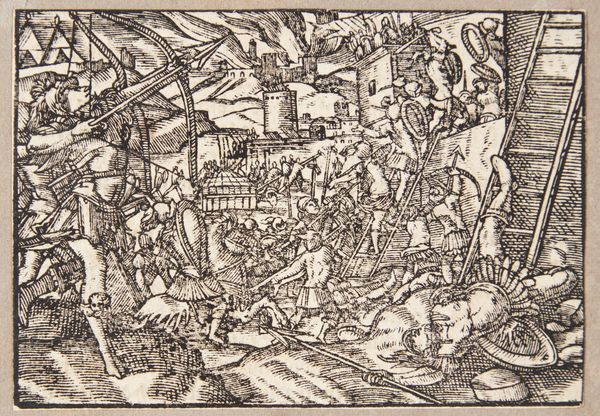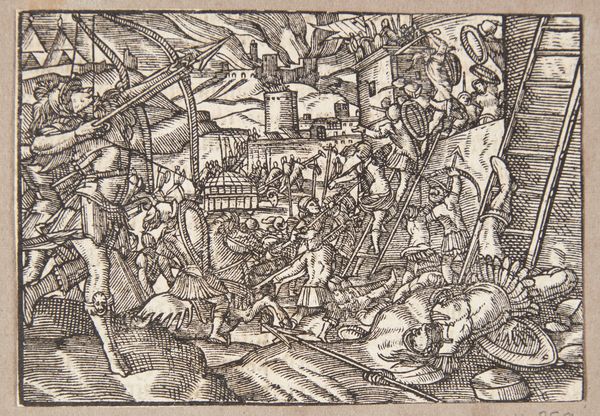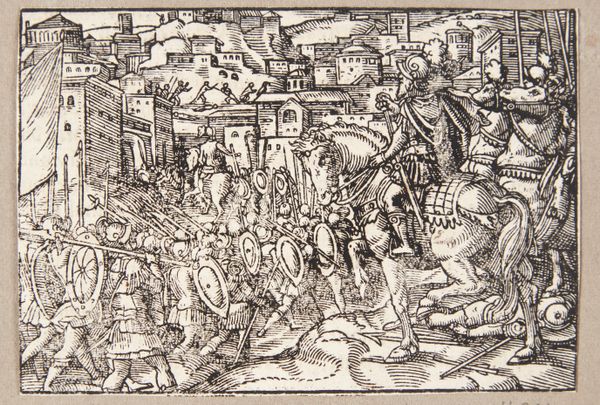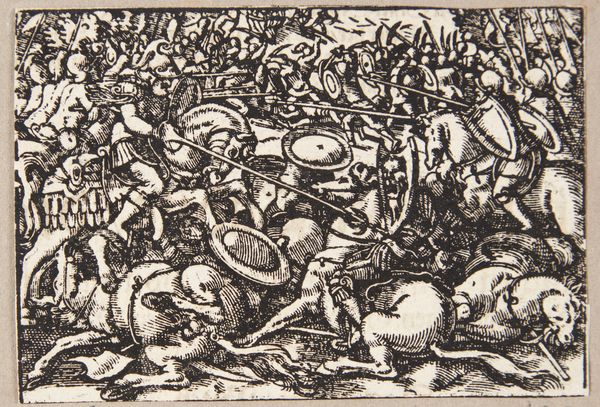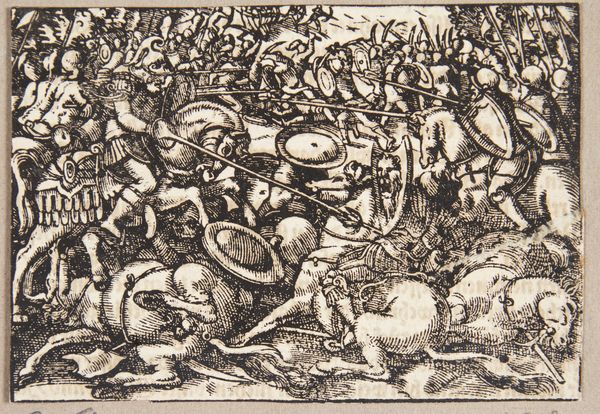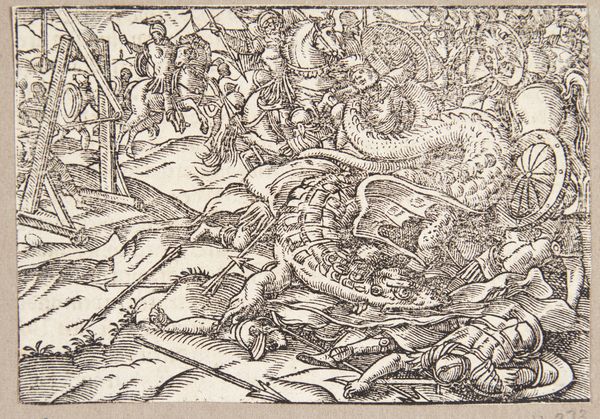
print, woodcut
#
medieval
#
narrative-art
# print
#
figuration
#
woodcut
#
history-painting
Dimensions: 75 mm (height) x 105 mm (width) (bladmaal)
Editor: This print, titled *Kamp mellem romerne og samnitterne* or *Battle between the Romans and the Samnites*, was created in 1574 by Tobias Stimmer, a Swiss artist. It’s a woodcut depicting a chaotic battle scene. The detail is incredible, especially considering the medium. It almost feels overwhelming with the mass of figures. How do you interpret this kind of intense historical narrative? Curator: I see this work reflecting the cultural and political climate of 16th-century Europe, beyond just depicting a historical battle. Printmaking at this time was becoming increasingly important as a means of disseminating information and shaping public opinion. Editor: In what way? Curator: Consider who was commissioning and consuming prints like this. Were they primarily intended for an aristocratic audience interested in military glory, or for a wider public, perhaps as a cautionary tale? And think about where it might be displayed, a scholar's collection? A wealthy person's display of status? The museum's choice to include it says a lot. Editor: So the museum’s current placement itself influences our reading? Curator: Precisely! Museums today play a significant role in constructing historical narratives. We need to be aware that a seemingly straightforward depiction of a battle can actually reflect specific social and political agendas, even our own contemporary biases. Editor: That’s a fascinating point. I hadn’t considered the artwork’s life beyond its creation, especially who got to look at it. It’s like the piece has had several lives. Curator: Indeed! And studying those "lives" gives us a deeper understanding of how power, patronage, and public perception have shaped our understanding of the past. Editor: Thank you, it definitely provides some interesting perspectives on interpreting historical narratives through art.
Comments
No comments
Be the first to comment and join the conversation on the ultimate creative platform.
